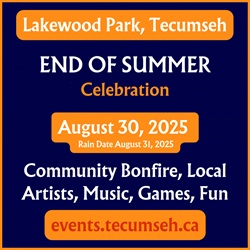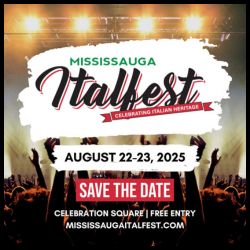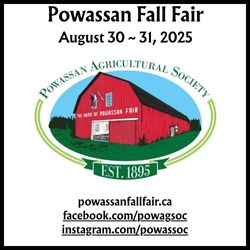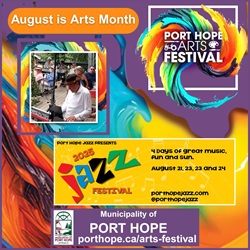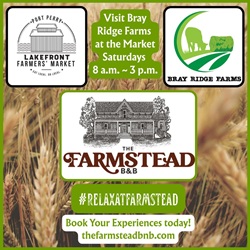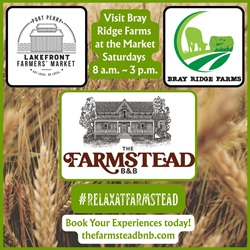Gurski: How safe from attack can public events really be?
Even small villages in Eastern Ontario have started blocking off streets so vehicles can’t be used to ram into crowds during festive gatherings.
Recently, the village of Russell held its semi-annual “Meet me on Main Street” event (it alternates years with nearby Embrun). This gathering has become popular of late in small communities in eastern Ontario, where local vendors and groups set up tables and engage with their neighbours.
This year’s edition was a huge success, with hundreds of residents milling along the main drag, Concession Street. The hot, muggy weather was no deterrent, although I must confess the presence of two craft breweries helped.
The township arranged the whole affair and announced in advance that a section of the street would be closed from 5 p.m. to 8 p.m. It brought out portable washrooms, a bouncy castle for the kids and the requisite barriers to remind people that they would have to detour around the venue. What surprised me, however, was the placement of two heavy dump trucks at either end, sealing off the road. Would wooden barriers and a sign not have sufficed?
I began to wonder whether the recent spate of incidents in which drivers have mowed down pedestrians was a factor in the decision to bring in the trucks. After all, it was only a few months ago, on April 26, that a man drove through a Vancouver Filipino cultural event, killing 11 and wounding 30. This was not deemed an act of terrorism, unlike the New Year’s Eve attack in New Orléans in which an ISIL-inspired man killed 14 and injured dozens of others.
Similarly, just the other day a man ejected from a night club for “disruptive behaviour” careened into a crowd in Los Angeles, harming at least 30 (police report he was inebriated, and most likely angered at having been rejected).
Russell is a small town, and not the place anyone would expect to be a terrorist to target. Still, township of Prescott-Russell officials must have to take all possibilities into consideration when planning events such as “Meet me on Main Street,” if for no other reason than liability should something untoward occur.
All this got me thinking of public venues and safety. Just like Russell, Embrun and other eastern Ontario communities, Ottawa has its own celebrations: Canada Day, Winterlude, Pride parades, music festivals and many others. What precautions need to be taken to prevent, to the extent possible, a horrific scene in which someone decides to run over those celebrating?
Good news and bad news on security
There is good news and bad news on this front. The good news is that yes, authorities can strategically place barriers around any given event to deter someone with nefarious intent. This plan relies, however, on the feasibility of encircling the location in question. Larger spaces with multiple entry points are much more difficult to secure.
Now for the bad news. It is not only vehicular attacks that are of concern. There have been many such incident where individuals armed with guns, bombs or knives have burst into crowds and tried to kill and/or injure as many as possible (Manchester 2017, Southport 2024, Paris 2015,Istanbul 2022 are all examples).
Authorities also have to weigh freedom of movement and the need not to “over-securitize” an event. While fairgoers and revellers may not mind seeing trucks and barricades, the presence of heavily-armed police may be off-putting. In addition, the placement of barriers has to done in such a way as to not hinder emergency vehicles should someone need help.
Even the presence of adequate barriers may not be sufficient: at the 2024 Magdeburg Christmas market attack in Germany, the attacker took advantage of a gap left open for emergency teams.
The best defense is, of course, a good offence. Authorities need to liaise with security intelligence and law enforcement agencies such as CSIS and the RCMP and receive frequent updates on possible attack scenarios. Safety must always be part of the planning process. This is complicated when, traditionally, agencies such as CSIS have rarely spoken with provincial — let alone municipal — figures (it all has to do with security clearances and access to sensitive information).
Thankfully, this gap has been recognized through recent amendments to the CSIS Act and is being addressed — I hope. Ottawa municipal and National Capital Commission authorities need to be brought into the intelligence tent when matters concern them. Large gatherings that make attractive targets surely qualify in this regard.
We must also remind ourselves that attacks of this nature are rare. While they are easy to execute given the unsophisticated weapons used, the vast majority of public events go off without a hitch. Still, in the unlikely event of an actual attack, it is also important to recognize that our protectors can only do so much.
Festivals and open-air celebrations are occasions to be cherished, not feared. Making it as easy as possible for the relevant security agencies and authorities to share information is part of ensuring we all can enjoy them.
By Phil Gurski, Ottawa Citizen





